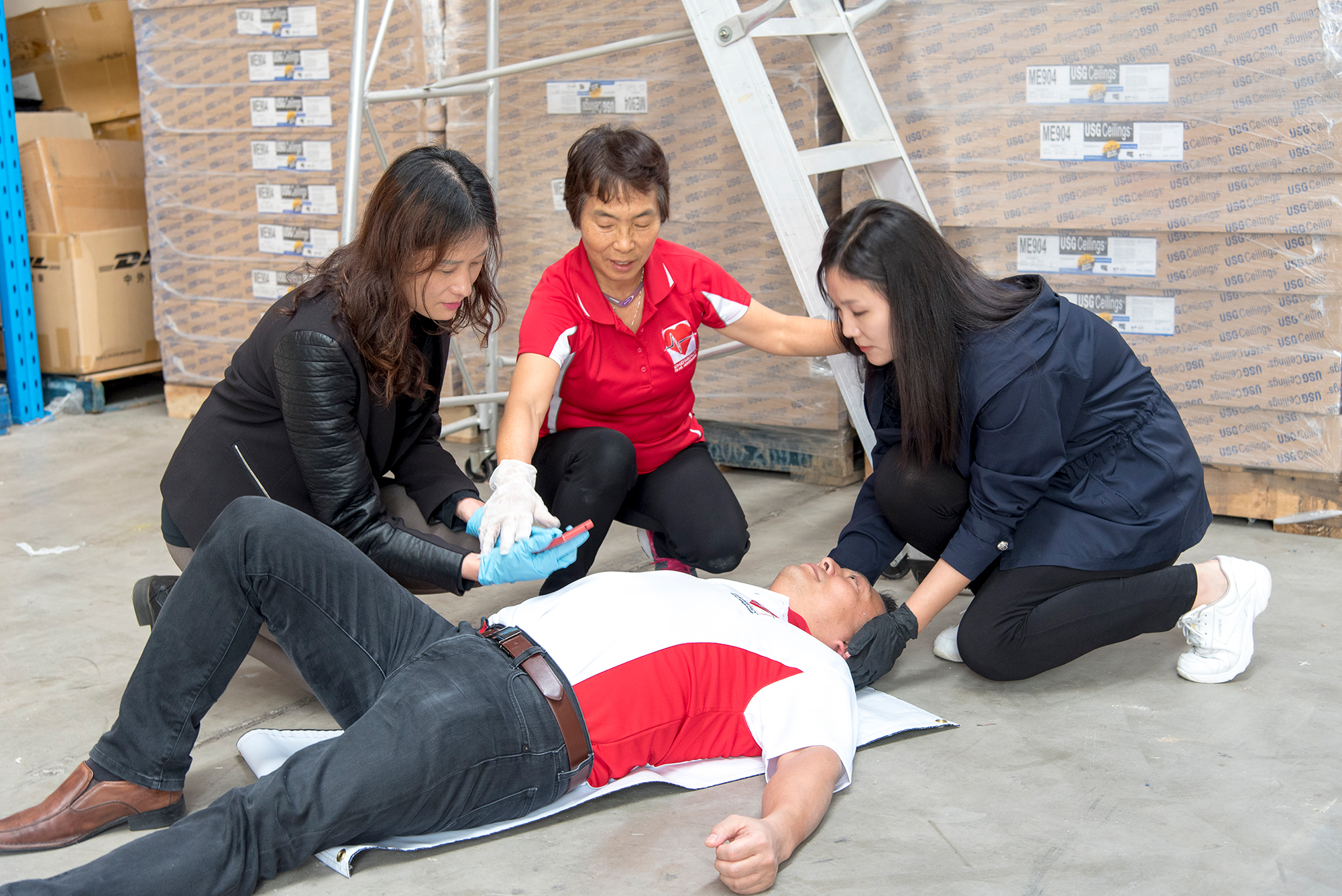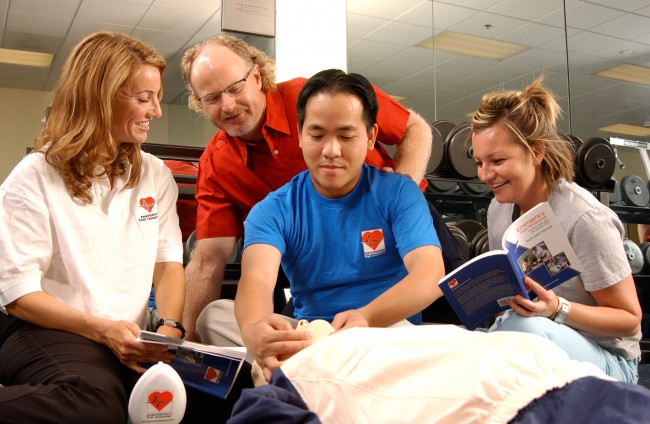AED and CPR training can improve both employee wellness and your bottom line. The benefit for employees is obvious – they’ll learn how to handle a medical emergency, and may one day save the life of someone they love. The financial benefit of AED and CPR training may not be as obvious, so let’s break it down.
Liability insurance rates are based on risk. For example, a mining operation pays more for insurance than a pillow store. That said, the least risky business in a particular industry pays lower rates than everyone else. Whether you run Robert’s Rock Refinery or Paola’s Pillow Place, documented safety training can help you reduce risk and qualify for lower insurance rates.
Above-Average Businesses Enjoy Below-Average Insurance Rates
Imagine there are two companies in the same town. They have the same number of employees, compete for the same customers and have identical safety records.
- The workers for Company A receive AED, CPR and first aid training annually
- Company B offers the same training but doesn’t make it mandatory
All things being equal, Company A will qualify for lower insurance rates. Company A can also say they offer superior employee benefits.

Is your team prepared for an emergency?
Insurance companies like to know their policyholders are prepared for emergency situations, that’s why smoke alarms and fire extinguishers are typically a requirement. In a medical emergency, taking proper, immediate action can prevent a small injury from becoming a permanent disability, and even save a life.
Sudden cardiac arrest (SCA) can happen anytime, anywhere — even to young, healthy people.
- In the UK, 100 people per week experience an SCA on the job
- In the U.S., 13% of workplace fatalities are due to SCAs
- In Australia, 33,000 people experience out of hospital cardiac arrest and fewer than 9% survive
An AED (automatic external defibrillator) can dramatically improve SCA survival rates. In some parts of the world, health clubs, are required by law to have one or more AED units. According to The Insurance Guy, “Even if you are not yet required to carry an AED, it is still the right thing to do and could potentially help keep you out of court.”

How much CPR training should an employer provide?
At minimum, employees should be trained how to:
- Activate emergency services (EMS)
- Perform CPR
- Operate an AED (if you have one)
- Take proper precautions to prevent disease transmission
- Use the contents of your first aid kit
Depending on your work environment, and risk management assessment, employees may need to know:
- Aid someone who is choking
- Bandage injuries and manage bleeding
- Respond to an anaphylaxis emergency
- Spinal injury management
HSE recommends employers, “consider the circumstances of your workplace, workforce and the health and safety risks that may be present to help you decide what arrangements you need to put in place.
“As a minimum, you must have:
- a suitably stocked first-aid kit
- an appointed person to take charge of first-aid arrangements;
- information for all employees giving details of first-aid arrangements.
“If your workplace has more significant health and safety risks, for example you use machinery or hazardous materials, then you are more likely to need a trained first-aider.”
AEDs are not required, however, UK employers should conduct a needs assessment and identify whether an AED is necessary. If the business has an AED, staff should be trained how to use it.
OSHA recommends, (but does not require) every workplace include one or more employees who are trained and certified in first aid, including CPR. Having an AED is considered a “best practice.”
Other Benefits of First Aid and CPR Training
A large financial firm discovered their CPR and First Aid training created bonds between disparate employees. The shared experience of learning how to save a life broke down barriers between people of different pay grades and improved working relationships throughout the company.

Let us help you build a safer, stronger business
Emergency First Response® (EFR) training is a creative and cost-effective way to reduce operational costs. Your employees will learn vital skills that could help them save the life of a customer, coworker, family member, or other valued member of your community.
Your team members can start their first aid and CPR training online, then schedule hands-on training when appropriate. EFR Instructors can also provide 100% online refresher training and teach an airborne pathogen awareness course.
Emergency First Response is accredited by:
(ACE) American Council on Exercise
Girl Scouts, USA
HSE (Health and Safety Executive Great Britain and Northern Ireland) for the purposes of first aid in the workplace
OSHA (Occupational Health and Safety Administration)
The U.S. Coast Guard (for a merchant mariner licence)
…and many others.
If you need to know whether an Emergency First Response course meets compliance standards for an organisation that is not on this list, please contact your Emergency First Response Regional Headquarters or an EFR Instructor near you.





